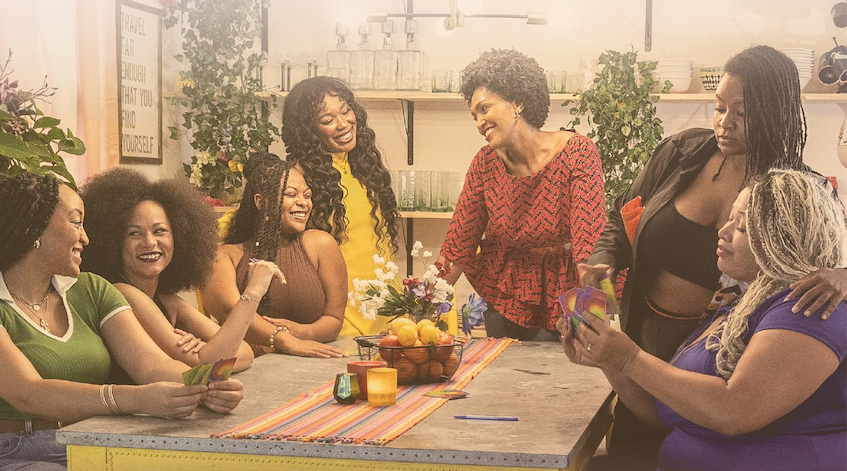
Last Sunday afternoon, I had the opportunity to attend an Opening Weekend performance of Circle Players’ 75th Season Opener, For Colored Girls Who Have Considered Suicide/When the Rainbow is Enuf. Since it’s 1976 off-Broadway debut, playwright Ntozake Shange’s creative, emotional piece has has given voice to generations of Black women, but more than that, it’s presented the oft-too-rare opportunity for a theatrical work to not only shed light of difficult subject matter, but to do so to ultimately uplifting and positive result. With those thoughts in mind, as the director, Cynthia Harris, and cast members Kamaryn Robinson, Jailin Roberts, Lauren Fitzgerald and the rest of the company readied for the show’s second and final weekend, I had the chance to pose a few questions for my latest Rapid Fire 20Q.
—————
Rapid Fire 20Q with cast members and diretor of Circle Players’ For Colored Girls Who Have Considered Suicide/When the Rainbow is Enuf
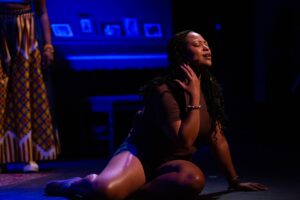 Rapid Fire with Kamaryn Robinson, For Colored Girls’ Lady in Brown
Rapid Fire with Kamaryn Robinson, For Colored Girls’ Lady in Brown
JHPENTERTAINMENT: What can you tell me about Lady in Brown, the character you play in For Colored Girls?
KAMARYN ROBINSON: Lady in Brown is the youngest of 7 and she calls upon her sisters after experiencing something traumatic with her partner. Throughout the play she takes in these rich amazing stories her sisters have to tell her about black women and love. Like many younger sisters, Lady in Brown has a very vivid imagination and vibrant spirit. She represents innocence and self-discovery.
JHPENTERTAINMENT: The first thing I noticed while attending an Opening Weekend performance was the balance of toughness and heart in the way you play Lady in Brown. Do you share those characteristics in your real life?
KAMARYN ROBINSON: I most definitely do. This play is about black women and all that they go through, the good and the bad so I naturally relate. It took a second for me to be able to dig deep and reach that point of vulnerability to show onstage but once our director, Cynthia coached me to that point, Lady in Brown and I became one. As for real life, I am a young woman who is too searching for her identity and discovering empowerment as I grow older.
JHPENTERTAINMENT: What is your earliest memory of theatre? AND…did you know immediately that that was something you wanted to pursue?
KAMARYN ROBINSON: In elementary school, I was cast in my first production as Cinderella. From that moment performing became an immediate passion of mine. Since elementary school, I have not stepped off the stage since and I don’t plan to anytime soon. Theater is a form of healing and therapy that not only the audience receives but the performers receive it too. In every production I perform in I have the same number one fan in the audience, my Mom!
JHPENTERTAINMENT: From what I understand, while you appeared in a few productions at Tennessee State University, including Chicken & Biscuits, Steel Magnolias and Zooman & the Sign, this is your first show at Circle. What’s been the most rewarding aspect of being in a Circle show as the company celebrates their 75th anniversary?
KAMARYN ROBINSON: Being apart of the Circle Players family has been such a huge blessing and amazing experience. This is my community theatre debut and what a better way to start than with Circle Players. This company has the most incredible and talented people and I have been so lucky to be connected with beautiful black women who uplift me. I can’t wait to work with them again!
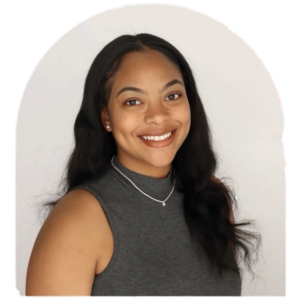 JHPENTERTAINMENT: What’s the most challenging aspect of playing Lady in Brown?
JHPENTERTAINMENT: What’s the most challenging aspect of playing Lady in Brown?
KAMARYN ROBINSON: The challenging aspect is navigating the complex emotions. Lady in Brown begins the play in a very hard place questioning how the world really sees black women. She then moves to a youthful optimistic moment that requires a lot energy while also portraying the pain of losing a sense of innocence. Finding that joy inside of the pain was very difficult for me especially while I worked alongside this ensemble of six other women. Portraying this story was a group effort and took a lot of connecting and trust in each other to be able to tell these relatable stories in a safe space.
 Rapid Fire with Jailin Roberts, For Colored Girls’ Lady in Yellow
Rapid Fire with Jailin Roberts, For Colored Girls’ Lady in Yellow
JHPENTERTAINMENT: As Lady in Yellow, you’re among the first to recite a monologue, and what a monologue it is. When I chatted with your director, I noted the juxtaposition of joy and pain peppered throughout the piece. Your first segment is a prime example of that. Do you have a pre-show routine to get it the right mindset for such an emotional show?
JAILIN ROBERTS: I actually have a pretty long pre-show routine to center myself before I step on stage! I start by listening to my gospel playlist to take a moment to praise and give thanks to God. It’s such a blessing to perform and I never want to take it for granted. I also believe that as a Black woman For Colored Girls is a spiritual experience and if I don’t feel grounded I might miss out on it. I have the tendency to get extremely nervous before I perform. Before places I stand in front of this mirror backstage with my headphones on and go through all my lines! To free up the “what if I forget/mess up” so I can play with my sisters on stage. Lastly, I stretch for my splits while praying and giving myself a lot of affirmations!
JHPENTERTAINMENT: Since first being published in 1976, For Colored Girls has been described as a work of choreopoetry. On the choreo side, this production features movement choreographed by Tosha Marie, who also happens to be Circle Players’ newly appointed Board President. You worked with Tosha in TMProductions’ Pippin back in 2022. How is Tosha as a choreographer?
JAILIN ROBERTS: Let me tell you! I absolutely adore Ms.Tosha and her work ethic. She is such a light and as a choreographer she knows how to encourage and push. As artist we can limit ourselves or believe the talents we display before honing in on our craft is the cap. Ms.Tosha always sees more than what we tell ourselves. As a teacher, trainer, and choreographer she has shown me that performers are also athletes and we should train our talents like one. Most importantly she’ll always want whoever she’s directing to believe in themselves and exercise grace in the learning process. Ms.Tosha is truly amazing and I am always excited when she’s choreographing.
JHPENTERTAINMENT: Who is Lady in Yellow to you?
JAILIN ROBERTS: To me she is who I am as a storyteller. Lady in yellow is how we have fun catching up with our cousins and aunties. How our moms lived many lives and think it’s funny to let us in on it at random times. Lady in Yellow is me, my mom, and all the Black women/girls who indulge in telling stories. It’s what I do on and off the stage. I love to bring life to the experiences I relay. I believe it’s what makes graduation nite so much fun because it’s how I express myself naturally.
 JHPENTERTAINMENT: If you were to do this show again, what other Lady could you see yourself portraying and what is it about that role that might interest you?
JHPENTERTAINMENT: If you were to do this show again, what other Lady could you see yourself portraying and what is it about that role that might interest you?
JAILIN ROBERTS: I would love to portray Lady in Brown if I am blessed enough to do this show again. Her opening monologue is so beautiful and moving. It’s the starting point of the show that gives a voice to all the Black women on stage and in the crowd. Brown has so much power in that moment I would love to have my own rendition someday.
JHPENTERTAINMENT: Circle Players is Nashville’s oldest continuing theatre company. What’s it like knowing you’re part of not just their important 75th Season milestone, but also a much-needed new direction for Circle?
JAILIN ROBERTS: I’m very excited and proud that the Board chose this show as their season opener. It’s exciting because it’s a statement that we’re here and we have voices to uplift. It’s important that we recognize that there isn’t enough Black theater. Our stories are ones that need to be told consistently! Black women have such a unique experience. Circle Players opening up the conversation at our talkbacks and shedding light on the complexities of our many experiences was on purpose. Having the amazing director Cynthia Harris take on this project was on purpose. We need more people supporting black theatre and uplifting our voices and stories. I give my flowers to Circle Players Board, Tosha Marie, and Cynthia Harris for contributing this show to the community.
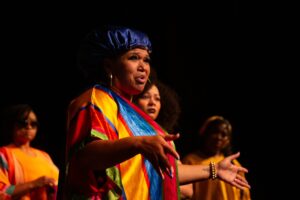 Rapid Fire with Lauren Fitzgerald, For Colored Girls’ Lady in Blue
Rapid Fire with Lauren Fitzgerald, For Colored Girls’ Lady in Blue
JHPENTERTAINMENT: What do I need to know about Lady in Blue?
LAUREN FITZGERALD: Lady in Blue is everyone’s favorite auntie! She is going to catalyze the hard conversations and also catalyze the healing. She is a straight shooter that loves and cares deeply about her sisters and the world around her. Lady in blue is a Capricorn with a Libra moon rising.
JHPENTERTAINMENT: You earned a degree in Theatre at UT Knoxville. Anytime I hear UT and Theatre, I’m gonna ask about my friend Carol Mayo-Jenkins…did you study under Carol? AND…What’s your favorite memory of your time at UT?
LAUREN FITZGERALD: I surely did study under Carol Mayo-Jenkins. She was an incredible influence on my career and journey as an artist and performer. I’m deeply grateful that she, and the rest of the theatre faculty believed in me and poured into my craft. I had two experiences that stand out at UT. One moment on stage at UT was my performance in The Story of Opal. It was my first opportunity to perform in an ensemble cast. The story that was rooted in a young girl’s exploration of nature and society. It was written from a single voice with rather obscure language and was devised by 5 diverse performers and a non traditional musician. That collective exploration was deeply impactful and has informed how I approached other creation processes. The other was being able to embody Alma Hix in The Music Man, primarily because it was a huge cast and we got to play with talent not just from the student body but from the community and our professors (including Carol Mayo-Jenkins). I’d also be remiss if I didn’t mention the profound impact that the Carpetbag Theatre, then led by Obie award winning playwright, Linda Parris Bailey, influenced me during my journey at UT. Having interned and performed there all through my time at UT, I found a theatre community that embraced me and nurtured my love for works like For Colored Girls who Committed Suicide/When the Rainbow is Enuf. I found home in Carpetbag and I am forever grateful.
JHPENTERTAINMENT: I love the feistiness in which you play Lady in Blue, as evidenced in one of your earliest lines: “you gave it up in a Buick?”. I literally LOL’d when I heard that while attending Opening Weekend. Gotta know…did you draw that feistiness and energy from your own personality or is there a Lady in Blue in your family or friends circle upon which you borrowed some of her traits?
LAUREN FITZGERALD: It’s all me, and I am all the women in my family. I am that auntie. Serendipitously, I did not get called back for Lady in Blue. But, after getting cast in the role I knew that I had a lot of my personality that I could contribute to the role. My friend circle is a strong mix of all of the colors. We show up different in different ways depending on the time and the circumstance. But, if you would ask my friends who my personality most aligns with, it would be Lady in bBlue.
JHPENTERTAINMENT: Your cast bio concludes with, “she believes in the color yellow”…for the uninitiated, care to elaborate?
LAUREN FITZGERALD: Sure! To elaborate (and ramble a bit lol)I believe I am bit synesthetic. I can see sounds sort of like how Pharrell Williams has described in interviews. I believe that when I experience the color yellow rather it be visual or sonically, it has the power to rejuvenate or reset my nervous system. It makes me feel good. I am an optimistic person by nature. So I feel like the color yellow almost resets my optimism should it be wavering for whatever reason. Alice Walker found her love for the color purple by noticing shadows in nature and how purple is everywhere which is so beautiful. However my belief in yellow is kind of similar yet opposite. The color yellow, also everywhere, represents light to me. Light is what brings understanding and sight. My passion is bridging understanding and bringing light to build genuine connections. Yellow represents light and love in a world with so much darkness.
 JHPENTERTAINMENT: Why is For Colored Girls as relevant for today’s audiences….of ANY race as it was when it first premiered?
JHPENTERTAINMENT: Why is For Colored Girls as relevant for today’s audiences….of ANY race as it was when it first premiered?
LAUREN FITZGERALD: This timeless piece tackles multiple intersections of belonging and care. It particularly addresses how marginalization can impact families. For me, this is just one perspective of how the social atrocities of this country have impacted our relationships, our ability to sustain healthy families, our self identities, and the health of our mind and bodies (both men and women; considering Beau Willie Brown). It helps us by listening to this story and considering how we might look to our own individual power or develop empowerment to find a sense of yellow, a sense of light and love to help rectify and combat these issues of humanity.
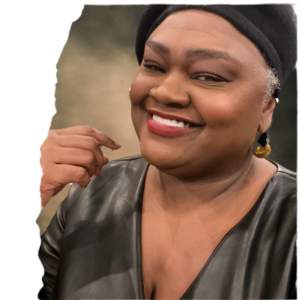 Rapid Fire with For Colored Girls’ director Cynthia Harris
Rapid Fire with For Colored Girls’ director Cynthia Harris
JHPENTERTAINMENT: You mention in your director’s note in the For Colored Girls’ program that you first read Ntozake Shange’s work when you were in the 5th grade. Do you remember your initial thoughts on the piece?
CYNTHIA HARRIS: Absolutely! I remember looking at the cover and reading the title while My Aunt Joyce explained how important the book/script was to her. She also told me I was old enough to read it. Being old enough made me feel special. I used the poem No Assistance by Lady in Red as my poem for a 5th grade Forensics competition at Meigs Magnet. My drama teacher approved of keeping the one cuss word and I was thrilled. I understood the pieces then, but not anywhere near the way I understand and have lived these words in my 46 years.
JHPENTERTAINMENT: In some way, was it that early connection to the work that ultimately lead you to direct this production?
CYNTHIA HARRIS: It made sense to me as a young person. It affirmed that the stories I overheard while my mother worked in her beauty salon or as she talked to her sisters on the phone, that they were as important or powerful as I felt they were. This is absolutely a full circle moment for me. As a playwright, my chosen format is the choreopoem. It gives me the most liberty to tell Southern Black women’s stories in an uninterrupted format. When Circle Players’ Board President Tosha Marie asked me to direct, it didn’t take me anytime to say yes. I have always wanted to direct this play.
JHPENTERTAINMENT: I’ve always been intrigued by the duality of the show’s title. The juxtaposition of the bleakness of the thought of suicide paired with the hopefulness of a rainbow. The show itself is a brilliant balance of emotions. Do you have segments that stand out to you?
CYNTHIA HARRIS: And in that bleak juxtaposition is also the remedy. The rainbow of women in our lives can and do save us by witnessing our stories and declarations of power. I love them all. I can’t choose one. One of my favorite lines from No More Love Poems is “being Black and being colored is a metaphysical dilemma I haven’t conquered yet.” Also from that section, “I’m finally being real, no longer symmetrical and impervious to pain.” For me the sadness, anxiety and depression are increased by the emotional labor expected of Black women and other women of color. If we can strip all the layers of performance we do to keep others happy or just to survive, we can find our joy and our rainbows.
JHPENTERTAINMENT: Over the years, I’ve seen a few productions of For Colored Girls. Typically, it’s presented almost like a poetry reading, where the primary orator takes center stage, but I love that you’re presenting it more like a girls’ weekend wherein the women seem to be sharing their stories with one another. You speak a little about this decision in your director’s note, but for those who’ve not yet seen the show, can you tell me a little more about presenting the show in this manner?
CYNTHIA HARRIS: For that reason you observed. It is usually presented in a more abstract and minimalist way. The play is 50 years old, and I wanted to do something different. I wanted color and costume changes. I wanted to layer this idea that the characters are all Sisters, who are reuniting because one has experienced something traumatic. The creative challenge was to add this layer of story and not change any of the words or their order in the choreopoem. I also wanted to show my relationship to this sacred text over time. I show it in my music exploration and use in transitions throughout the show. I also thought about all the places that I have come together with my women friends to retreat and reset. We sit together in living rooms on sofas, playing games and having long conversations. We sit in kitchens around tables with meals we’ve lovingly prepared for each other. We sit on the porch; we’re Southerners after all. I wanted to mirror back to the audience their everyday brilliance and resilience.
JHPENTERTAINMENT: What do you hope audiences take with them after having seen For Colored Girls?
CYNTHIA HARRIS: That BIPOC women and female identifying people are seen and loved. We are complex humans and God/Higher Power is with us in all our experiences and choices, good or bad. I want them to find God in themselves and to LOVE HER FIERCELY!!!
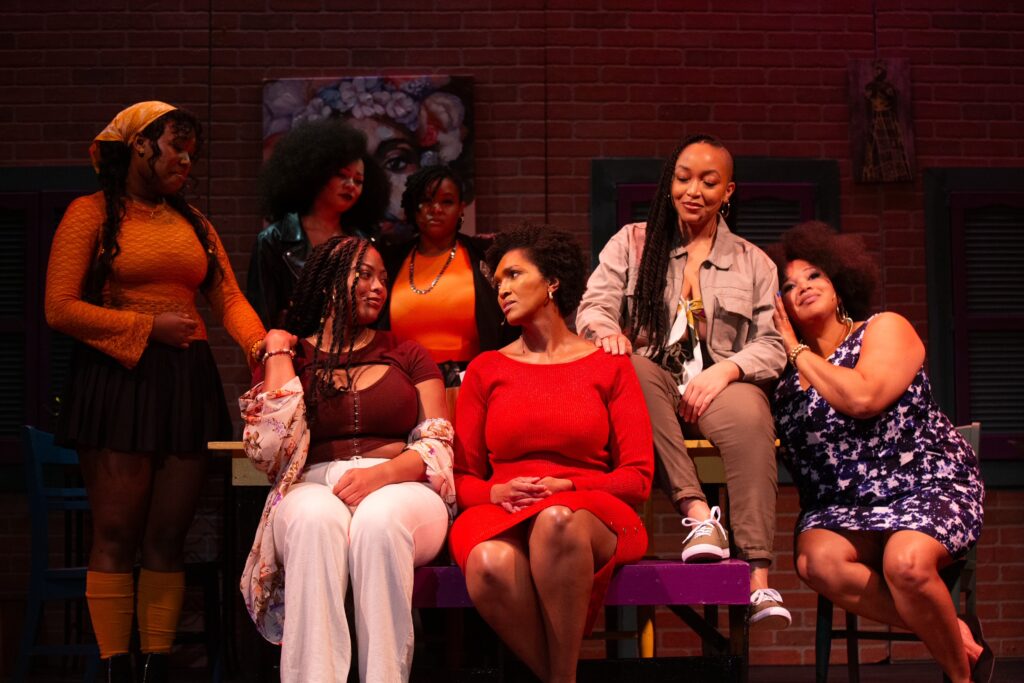
—————
Circle Players’ For Colored Girls Who Have Considered Suicide/When the Rainbow is Enuf wraps its two-week run with performances at Z. Alexander Looby Theatre (2302 Rosa Parks Blvd, Nashville, TN 37228) Friday, October 18 at 7p.m., Saturday October 19 at 2p.m. and 7p.m. and Sunday, October 20 at 2p.m. CLICK HERE for tickets.
Following For Colored Girls, Circle Players will begin preparing for their Winter presentation, And The World Goes ‘Round, a musical review of the songs of Kander and Ebb. Auditions will be held Saturday, November 2 at CLICK HERE for more info, character details and to sign up to audition. Performances of And The World Goes ‘Round will be January 10-26, 2025. CLICK HERE for tickets. Be sure and follow Circle on Facebook, Insta and TikTok for the latest news from Nashville’s oldest continuing regional theatre company.
Interested in coverage for your latest entertaining endeavor? Click the contact page and drop me a note. You can also follow JHP Entertainment on Instagram and Facebook. In the meantime, #GoSeeTheShow!